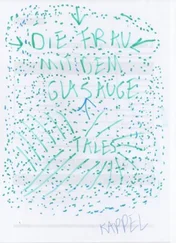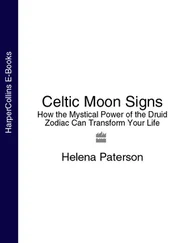Jodorowsky, Alejandro - Psychomagic - The Transformative Power of Shamanic Psychotherapy
Здесь есть возможность читать онлайн «Jodorowsky, Alejandro - Psychomagic - The Transformative Power of Shamanic Psychotherapy» весь текст электронной книги совершенно бесплатно (целиком полную версию без сокращений). В некоторых случаях можно слушать аудио, скачать через торрент в формате fb2 и присутствует краткое содержание. Год выпуска: 2010, Издательство: Inner Traditions Bear & Company, Жанр: Старинная литература, на английском языке. Описание произведения, (предисловие) а так же отзывы посетителей доступны на портале библиотеки ЛибКат.
- Название:Psychomagic: The Transformative Power of Shamanic Psychotherapy
- Автор:
- Издательство:Inner Traditions Bear & Company
- Жанр:
- Год:2010
- ISBN:нет данных
- Рейтинг книги:4 / 5. Голосов: 1
-
Избранное:Добавить в избранное
- Отзывы:
-
Ваша оценка:
- 80
- 1
- 2
- 3
- 4
- 5
Psychomagic: The Transformative Power of Shamanic Psychotherapy: краткое содержание, описание и аннотация
Предлагаем к чтению аннотацию, описание, краткое содержание или предисловие (зависит от того, что написал сам автор книги «Psychomagic: The Transformative Power of Shamanic Psychotherapy»). Если вы не нашли необходимую информацию о книге — напишите в комментариях, мы постараемся отыскать её.
Psychomagic: The Transformative Power of Shamanic Psychotherapy — читать онлайн бесплатно полную книгу (весь текст) целиком
Ниже представлен текст книги, разбитый по страницам. Система сохранения места последней прочитанной страницы, позволяет с удобством читать онлайн бесплатно книгу «Psychomagic: The Transformative Power of Shamanic Psychotherapy», без необходимости каждый раз заново искать на чём Вы остановились. Поставьте закладку, и сможете в любой момент перейти на страницу, на которой закончили чтение.
Интервал:
Закладка:
If I understand you well, one must, in Psychomagic, learn to speak the language of the unconscious in order to consciously send it messages.
Exactly. And if one directly addresses the unconscious in its own language, in theory it is going to answer. But we will get to that. For now, I would like to explain how the magic act contributed to the advent of Psychomagic. While in Mexico, I found myself confronted with the power of harmful sorcery. I, very naturally, asked the same power of beneficial sorcery. If those forces could be put to the service of evil, couldn’t they be used for the service of good? I also searched for a good wizard. Then a friend spoke to me of the famous Pachita, a small, good eighty-year-old woman. People came from far away to consult her in the hope of being healed. I was very moved by the prospect of meeting this famous sorceress, so I prepared myself for this.
What do you mean “moved”?
I had my guard up. After all, nothing guaranteed me that this woman wasn’t also evil. In Mexico, there are very dangerous sorcerers who can covertly introduce a little soreness into the unconscious of a visitor and trigger a delayed reaction. You see, at first you don’t feel a thing, but at the end of three or six months, you’re in agony . . . I therefore protected myself when I visited Pachita. You understand, she wasn’t just any sorceress: her consultations could easily attract three thousand visitors. I tell you, it was sometimes necessary to evacuate her by helicopter. So it suited me to take precautions.
How does one protect oneself from the influence of a sorcerer?
It was in a way my first psychomagic act. Above all, I felt that at all costs, I had to disguise myself. To go to her in the fullness of my old identity was to expose myself to the worst. So I began by dressing myself in brand new clothing from head to toe. It was important that my clothes not be chosen by me. I gave money and my measurements to three friends and asked them to go buy all the clothing they wanted to.
Why three friends?
For depersonalization and so that the outfit thus obtained did not reflect the taste of any particular individual. Socks, underwear, everything had to be absolutely new. It was not until I departed for the meeting with Pachita that I put on these new garments. In addition, I prepared a false identity card: another name, another birth date, another photo . . .
I bought a slab of pork, wrapped it in silver paper, and put it in my pocket as a reminder. So each time I put my hand in my pocket, the rather unusual contact with the meat would remind me that I was in a special situation and that I should avoid letting myself get caught up, no matter what happened. I arrived at the apartment where Pachita was operating that day, and I found myself in the presence of about thirty other people, some of whom occupied important social positions. I should point out that I met her under relatively privileged conditions, far from those crazies who press around her while she operates in a public place. I made myself part of the intelligentsia. Although she had never been to the cinema, Pachita knew that I was a filmmaker, director of the film El Topo, which had been talked about a lot. I approached and saw a tiny old woman, stocky and nearly blind. Her forehead was rounded and her nose fell downward giving her the appearance of a monster. I had just entered when she tossed me a piercing look and heckled me, “Boy, my boy!”—it was a little strange to hear myself called “boy” at more than forty years old—“What are you are afraid of? Get closer to this poor old lady.”
Slowly, I got near her, stupefied. She had used the right expression to address me. At this age, indeed, I was not mature. While I was no child, my level of maturity was not really that of a forty-year-old man. At heart, I had remained an adolescent.
“What do you want from me? What do you want from this poor old lady?” she asked me.
“You are a healer, right?” I responded. “I would like to see your hands.”
To general astonishment—everyone wondered why she suddenly granted me so much importance—she put her hand in mine. This old lady’s hand had such softness, such purity . . . It could have belonged to a young girl of fifteen. I couldn’t believe my senses.
“Oh!” I exclaimed. “You have the hand of a young girl, of a beautiful young girl!”
At that moment, instantly, I was invaded by a feeling, difficult to describe. Facing this deformed old woman, I felt myself in the presence of an ideal adolescent, the girl that the young man in me had always searched for. She had her hand raised, palm toward me, and it clearly appeared to receive something. I was completely lost, and I did not know what to do. From her assistants a murmur arose. “Accept the gift,” they all told me, “accept it!” I thought quickly: the gift of Pachita is of an unspeakable nature; but I wanted to act like I accepted the invisible gift. So I made a gesture as if taking something in my hand. But as soon as I approached her, I saw something shining between her ring finger and middle finger. I seized the metallic object that was nothing other than an eye on the inside of a triangle. Now, it was precisely the symbol of El Topo . . . I began to draw some conclusions from this—at the very least—striking experience: “This woman is an exceptional magician. When she first put her hand in mine, I clearly felt that she was not hiding anything. She had prepared her blow, but how did she make this eye emerge from out of nowhere? How did she know this object was the symbol of my film? In any case, she had me.” I then asked her if I could serve as her assistant, and she immediately accepted.
“Yes,” she told me. “You will be the one to read the poem that will cause me to go into trance.”
So I began to recite a consecrated poem to the divinized Mexican hero, Cuauhtémoc. Suddenly, this shriveled old lady let out an enormous cry, close to the roaring of a lion, and she began to speak in a man’s voice, “My friends, I am happy to be among you. Bring me the first of the sick!”
The patients began to line up, each holding an egg in his hand. After rubbing their whole bodies with it, the sorceress broke it and examined the white and the yellow to detect the evil . . . If she found nothing grave, she prescribed infusions, or sometimes stranger things like café au lait enemas. It happened that she advised eating termite eggs and making a plaster with mashed potatoes and human excrement . . . When she judged the problem serious, she proposed a “surgical operation.” Witnessing these interventions, I saw incredible things; compared to these operations, the work of Filipino healers would seem innocent.
Example?
Oh! I could tell you of hundreds of operations. Later, indeed, I continued to serve as her assistant. I wanted to be the first to scrutinize the phenomenon, and thus I was witness to the most unprecedented things. I’ll first describe the ambiance. The majority of the time Pachita operated at her home at the rate of one or two sessions per week. This apartment was pervaded by a pestilential odor because she gathered up all the sick animals in the neighborhood to live there for a time and do their business . . . It was torture to wait in this place breathing in the dog, cat, parakeet droppings . . . Yet, as soon as Pachita entered the room to operate, the odor seemed to disappear just from her presence. Without a doubt, it was her incredible presence, the allure of a queen who made us forget these nauseating fragrances. This little old lady had the aura of a great reincarnated lama.
What do you believe made her so impressive?
Читать дальшеИнтервал:
Закладка:
Похожие книги на «Psychomagic: The Transformative Power of Shamanic Psychotherapy»
Представляем Вашему вниманию похожие книги на «Psychomagic: The Transformative Power of Shamanic Psychotherapy» списком для выбора. Мы отобрали схожую по названию и смыслу литературу в надежде предоставить читателям больше вариантов отыскать новые, интересные, ещё непрочитанные произведения.
Обсуждение, отзывы о книге «Psychomagic: The Transformative Power of Shamanic Psychotherapy» и просто собственные мнения читателей. Оставьте ваши комментарии, напишите, что Вы думаете о произведении, его смысле или главных героях. Укажите что конкретно понравилось, а что нет, и почему Вы так считаете.












